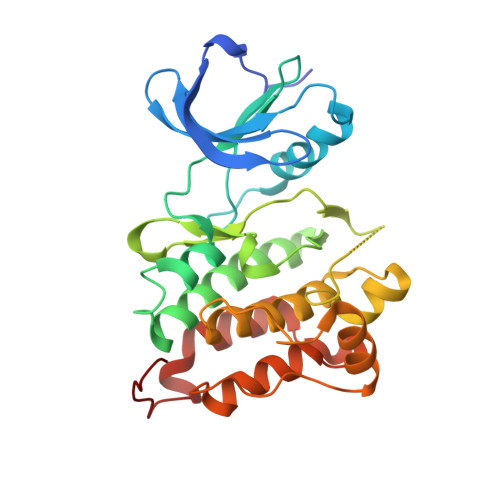A conserved water-mediated hydrogen bond network defines bosutinib's kinase selectivity.
Levinson, N.M., Boxer, S.G.(2014) Nat Chem Biol 10: 127-132
- PubMed: 24292070
- DOI: https://doi.org/10.1038/nchembio.1404
- Primary Citation of Related Structures:
4MXO, 4MXX, 4MXY, 4MXZ - PubMed Abstract:
Kinase inhibitors are important cancer drugs, but they tend to display limited target specificity, and their target profiles are often challenging to rationalize in terms of molecular mechanism. Here we report that the clinical kinase inhibitor bosutinib recognizes its kinase targets by engaging a pair of conserved structured water molecules in the active site and that many other kinase inhibitors share a similar recognition mechanism. Using the nitrile group of bosutinib as an infrared probe, we show that the gatekeeper residue and one other position in the ATP-binding site control access of the drug to the structured water molecules and that the amino acids found at these positions account for the kinome-wide target spectrum of the drug. Our work highlights the importance of structured water molecules for inhibitor recognition, reveals a new role for the kinase gatekeeper and showcases an effective approach for elucidating the molecular origins of selectivity patterns.
- Department of Chemistry, Stanford University, Stanford, California, USA.
Organizational Affiliation:

















